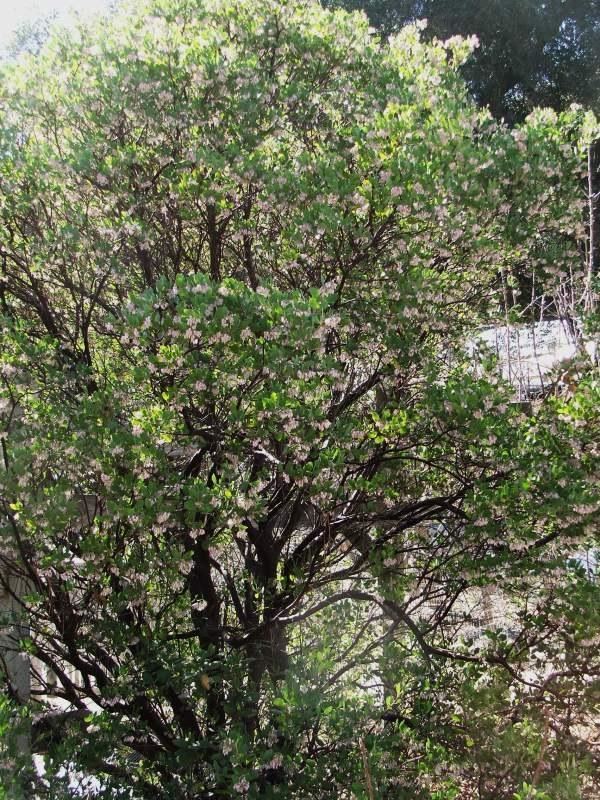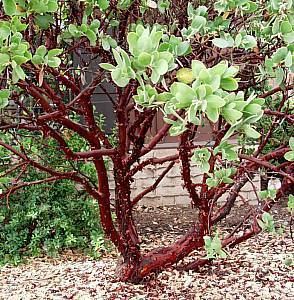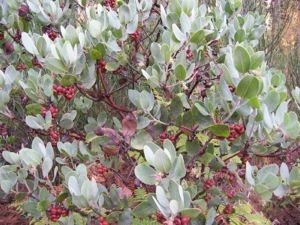Rank Species | Genus Arctostaphylos Higher classification Arctostaphylos | |
 | ||
Similar Arctostaphylos, Arctostaphylos densiflora, Arctostaphylos hookeri, Arctostaphylos pajaroensis, Arctostaphylos bakeri | ||
One of many species of manzanita, Arctostaphylos manzanita has the common names Common manzanita and Whiteleaf manzanita.
Contents
Arctostaphylos manzanita is endemic to California, where it can be found in the Coast Ranges and Sierra Nevada foothills. It is common on chaparral slopes and low-elevation coniferous forest ecosystems.

Description

The Arctostaphylos manzanita leaves are bright shiny green, wedge-shaped and pointed. The small white flowers, only a quarter inch long, are cup-shaped and hang upside down. The fruits are berries which are white when new and turn red-brown as the summer wears on. The bark on the long, crooked branches is reddish, making the shrub easily identifiable as a manzanita. It grows into a twisted tree about 15 feet tall.

These have extremely resistant seeds that only germinate under tremendous stress. Tests have been done to test the effects of chemical cues on their rate of germination. An example of the chemical cue used would be liquid smoke. The concentration of liquid smoke will be changed among the different species to compare the species receptivity to the cue.

Like other manzanitas, this species has a hard, attractive wood that has proved useful for making tools and as firewood. The fruit is edible and has a pleasant tartness, but it causes gastrointestinal upset if eaten in large quantities. It has historically been brewed into a cider.
Subspecies
There are several subspecies:

